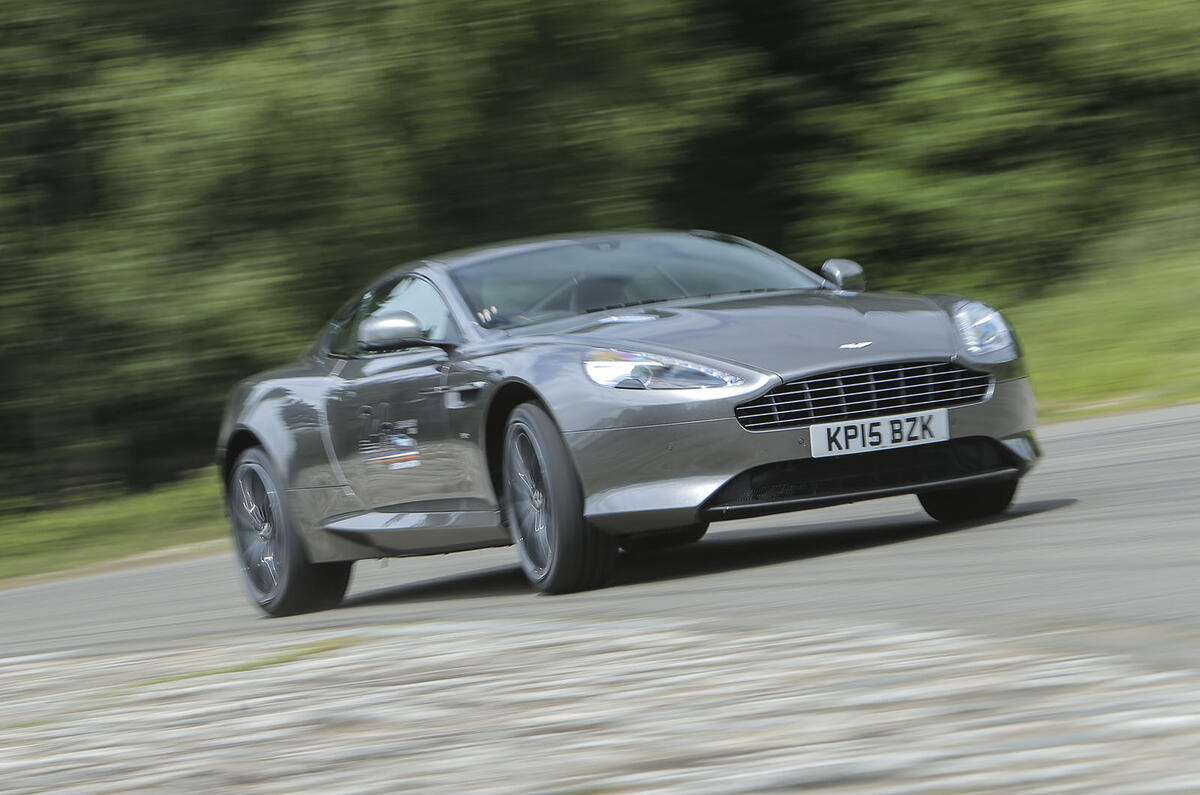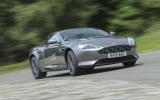Familiar, mainly, but the DB9 has had huge improvements over the years and this car continues the trend right to the end.
There’s a feeling, typified by the new nav screen, touch-sensitive console switchgear and a myriad more conscientiously applied improvements, that Aston Martin is using this last of the DB9s to ramp up to its replacement, called DB11 (shown at Geneva next March; on sale late in the year), because the DB10 label has already been used up on the forthcoming Bond film.
The 5935cc quad-cam V12 appears for the last time in normally aspirated form, punching out another 30bhp and thus delivering 540bhp at 6750rpm, not far short of the output tipped for the cleaner, twin-turbo version that’s coming next.
But again, there’s a strength and a simplicity about the way this engine delivers its power, good enough to be remembered long after it’s gone. It still sounds wonderful in the cabin and the always smooth power and torque delivery are second to none, even if the paddle-controlled automatic transmission is only a six-speeder as opposed to the eight-slot ’box everyone else is adopting (including Aston itself for the DB11).
There aren’t many other headline changes in the GT, barring the name, but the colour and trim options are modern and varied (Aston prides itself on meeting customers needs here). The looming fascia and somewhat confined cabin don’t really match the best modern designs, but the whole thing is built with obvious love and care, and it’s a pleasure to run your eye along the flawless hand-stitching of the dash
Dynamically, the car is a peach. The ride is flat and controlled - perhaps a few percent softer than hard-nuts would like - but ideal for the use we put it to on test, which included a drive to Le Mans. There’s a pleasant feeling of tautness about the whole structure, but the damping delivers near-perfect body control with subtle comfort.
The steering has been improved in steps since 2003 and now stands pretty close to perfect for a fairly quick and intuitive car such as this. If this feature crosses the divide to the DB11, it’ll be good news.
On a long trip you might feel a bit constrained by the paucity of interior space. Some will never notice (and compared with the previous DB7 it’s like a mobile ballroom) but the footwells are no bigger than they need to be and the fascia intrudes into occupants’ personal space in a way the DB11’s creators have avoided.






































Join the debate
Add your comment
eight speed to transform
eight speed to transform
The DBS was still the best